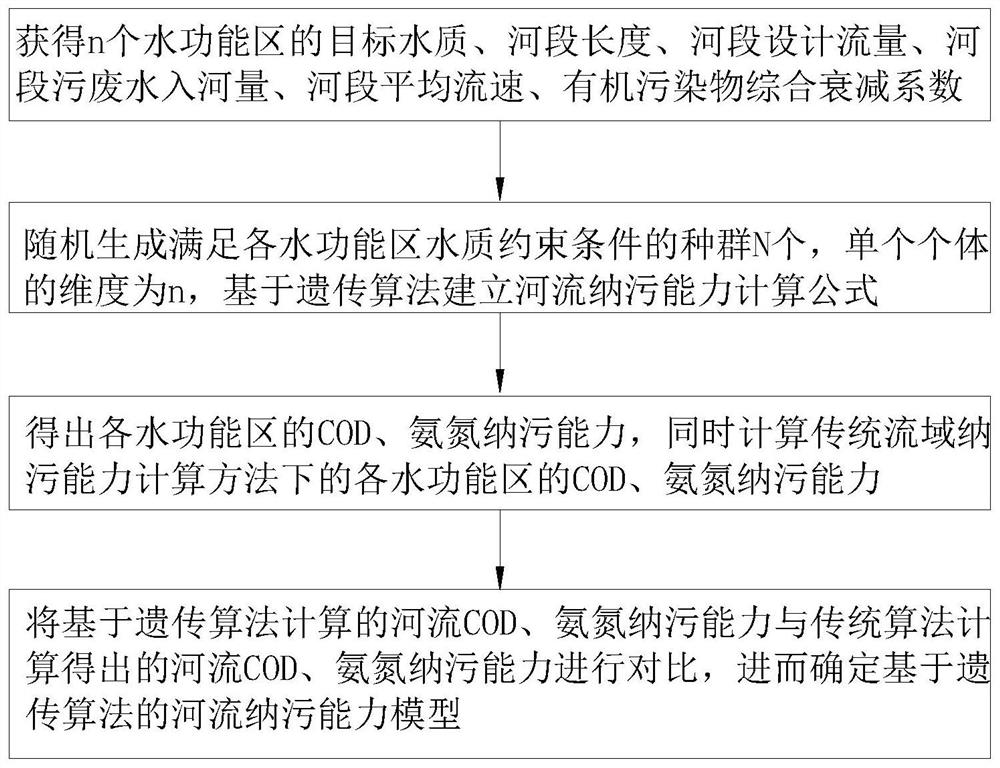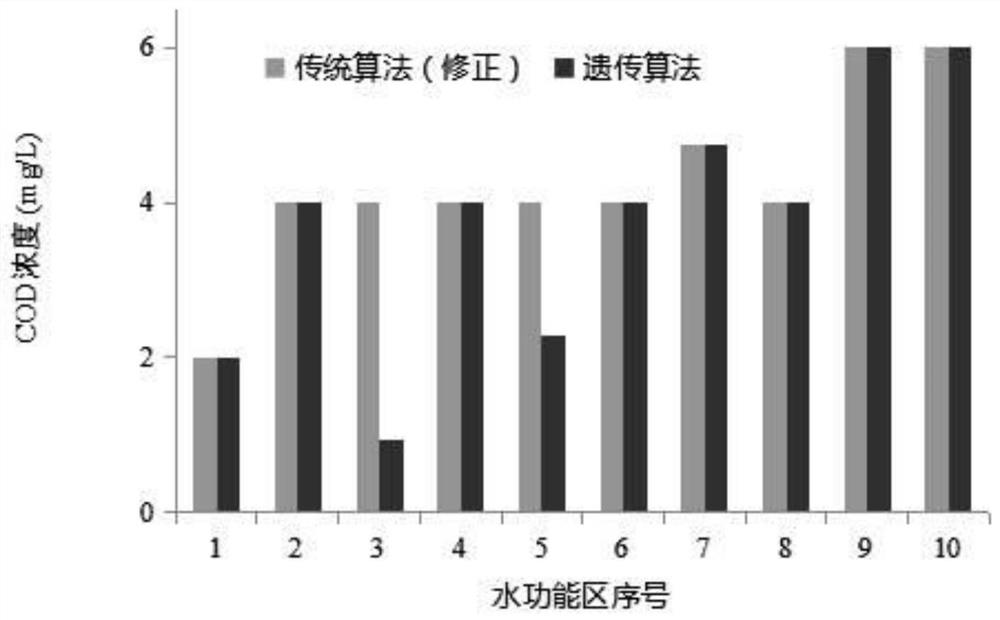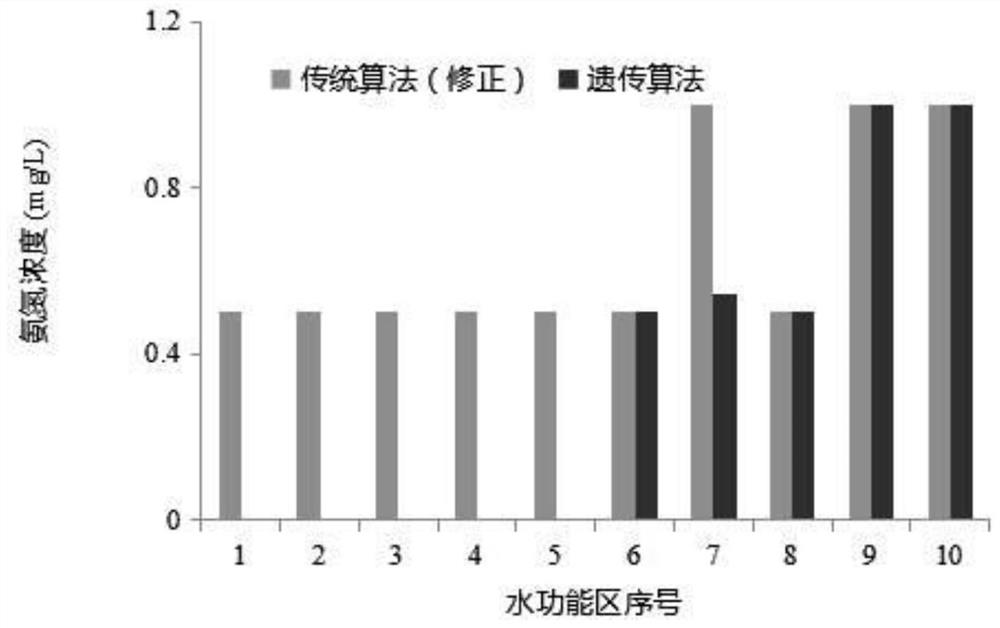Basin assimilative capacity calculation method based on genetic algorithm
A technology of pollution-holding capacity and genetic algorithm, applied in the direction of genetic rules, calculations, genetic models, etc., can solve problems such as negative pollution-holding capacity, achieve the effects of reducing pollutant concentration, increasing sewage discharge space, and improving water quality in river basins
- Summary
- Abstract
- Description
- Claims
- Application Information
AI Technical Summary
Problems solved by technology
Method used
Image
Examples
Embodiment 1
[0033] Such as figure 1 As shown, the calculation method of the basin pollution-holding capacity based on genetic algorithm of the present invention comprises the following steps:
[0034] Step A, obtain the target water quality C of n water functional areas max,i , the length of the river section L i , Design flow Q of river section i , The amount of sewage and wastewater entering the river in the river section Q p,i , the average velocity u of the river section i , organic pollutant comprehensive attenuation coefficient K i , where, i=1,2,...,n;
[0035] Step B, randomly generate N populations that meet the water quality constraints of each water function zone, and the dimension of a single individual is n, that is, obtain the design water quality C of the control section of each water function zone s,i , Section inflow design water quality C 0,i , i=1,2,...,n, and establish the calculation formula of river pollution-holding capacity based on genetic algorithm.
[00...
Embodiment 2
[0049] Such as figure 2 , image 3 as shown, figure 2 It is the comparison of COD concentration in each water function zone under the different pollution-holding capacity calculation methods of a certain watershed provided in this embodiment; image 3 It is the comparison of ammonia nitrogen concentration in each water function area under different calculation methods of the pollution-holding capacity of a watershed provided in this example; this example takes the research on the pollution-holding capacity of a certain watershed as an example, proposes a calculation model of the watershed’s pollution-holding capacity based on genetic algorithm, and calculates The total pollution-holding capacity of the watershed. The specific implementation steps are as follows:
[0050] A. Obtain the target water quality of 10 water function zones in a river basin C max,i , the length of the river section L i , Design flow Q of river section i , The amount of sewage and wastewater ent...
PUM
 Login to View More
Login to View More Abstract
Description
Claims
Application Information
 Login to View More
Login to View More - R&D
- Intellectual Property
- Life Sciences
- Materials
- Tech Scout
- Unparalleled Data Quality
- Higher Quality Content
- 60% Fewer Hallucinations
Browse by: Latest US Patents, China's latest patents, Technical Efficacy Thesaurus, Application Domain, Technology Topic, Popular Technical Reports.
© 2025 PatSnap. All rights reserved.Legal|Privacy policy|Modern Slavery Act Transparency Statement|Sitemap|About US| Contact US: help@patsnap.com



